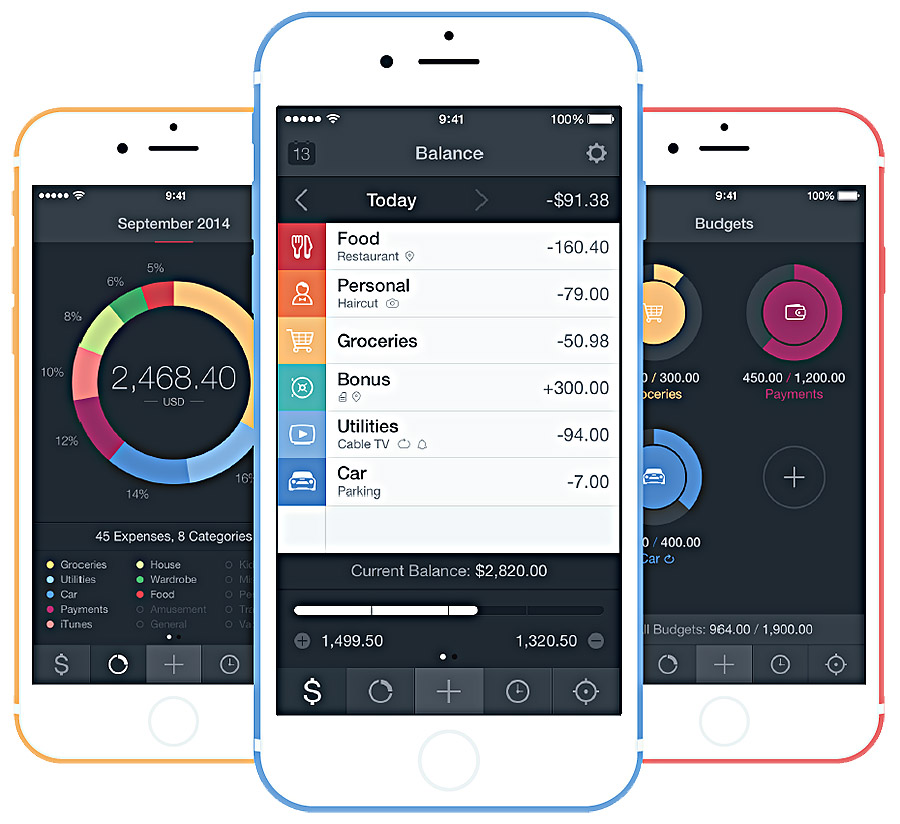We all know that all too familiar sinking feeling of staring at an ever-stagnant bank account. Every month you try something new, cut back on eating out, skip the impromptu outing with friends, hold off until next month to make that big purchase you want, all in the hopes of padding your savings account. Even after getting a raise, you still can’t seem to save. So, what’s the secret? How do you end this cycle of living paycheck to paycheck?
The answer: A well thought out budget. If you are determined to do this right now, I urge you to open this spreadsheet, and start filling it in with your information as we go through each step.
Step One: Measure all your Recurring Expenses
This could include such things as monthly rent, gym membership, car/health/home insurance, phone and internet bills, monthly subscriptions, etc. It can be tricky but look at your last few years of tax returns, and estimate how much this years will be.
Step Two: Measure all your Sources of Income
For a majority of the population this is just coming from your 9-5 job salary.
Step Three: Gross Income – Recurring Expenses = Ideal Savings
So what you just calculated is the absolute most you could possible save this year… anything you spend on top of that will take away from this amount.
Step Four: Determine a Budget
There are many complex ways to keep a budget, we do it the simplest way, because we found it to be the best way that works for us. We do not make budget categories… we have just one budget amount for every out-of-pocket expense. Our number is $450/month each; this is for everything: Gasoline, Food, Clothes, Eating-Out, Entertainment, Gifts – basically any non-recurring cost that isn’t being accounted for in the expense portion of the spreadsheet.
When we first started doing this at the very beginning of our Marriage, we started by literally withdrawing $400 in cash for each of us, and putting them in separate envelopes at the beginning of each month. I felt this was a great way to start – when we first started, we both thought $400 was a ton of money; and that it would be easy… we were wrong; it was amazing to see that thickly padded envelope just dispense to nothing – many times before the 30th/31st came. A few months in we raised it to $450, and have been at that for the last four years or so.
I highly recommend cash, because cash is real – when you take a Benjamin and put it in your wallet at the beginning of the week, only to find it gone in a couple days – you feel that. You take your credit card; you buy a shirt, some lunch, fill up some gas – it’s not painful; not until you get your statement and try to wrap around the idea how all those little numbers can sum total to such a gigantic number. Anyway after developing the discipline by spending cash, we switched to cards; because we enjoy churning cards and getting free miles. So far we’ve gotten free trips to Japan and Europe almost all through credit card bonuses.
Step Five: Track your Budget
So develop your own system, if you can do the cash system – that is probably the best and simplest. We track our expenses through the Saver app – and yes I know there’s mint and other apps; but I like this app for its pure simplicity. You set a monthly budget amount, and then every time you spend something, you simply enter it in – and it takes away from the set amount.

Anytime I’m at the checkout or shopping online and I make a purchase, I immediately enter it into the app. It takes away from our monthly budget and I know exactly how much I am spending. I am working to get a promo code from the developers to hopefully offer a discount to the FamVestor readers, currently it is $4.99 on the app store. I speak a little about the app and show myself using it in Episode 2 of the Vailen Venture Vlog.
Why Budget when you can just finance everything?
The way I look at it, every loan payment, every subscription, every recurring monthly bill is a tax. A garner on your wages. I try to limit the amount of debts I am chained to as much as possible; they will significantly slow your savings and keep you trapped in the paycheck to paycheck lifestyle. The best deals are found when you got a wad of cash and you negotiate with the seller; no interest, no fees, no payments. I used to buy and sell cars, I’ve owned 19 cars in my short lifetime – every one of them I paid cash and got significant discounts. No one wants an I-O-U, and if they do accept it; they will make you pay through the nose. I have a friend, smart guy, who is financing his car – he is paying 23% interest! That means over the four years he is paying off the car, he is essentially going to pay double!
Create a budget, pay off your debts, get an emergency fund going, start being able to pay for things cash, and take control of your finances. Your future self will thank you for it.
Work hard and make your own luck, Godspeed.



2 thoughts on “How to Stop Living Paycheck to Paycheck – A Optimized Guide to Budgeting”
Hi SeungKook. Curious as to the $450 spending budget. Is that amount for the whole family? (Aka $450 total) or do each of you get $450 a month to spend ($900 total)?
$450 a month for me and $450 a month for Sunmarie. So total of $900 a month for out of pocket expenses for the family. I highly recommend checking out https://www.famvestor.com/spreadsheet where I go into detail in how this budget can work with your other recurring expenses.